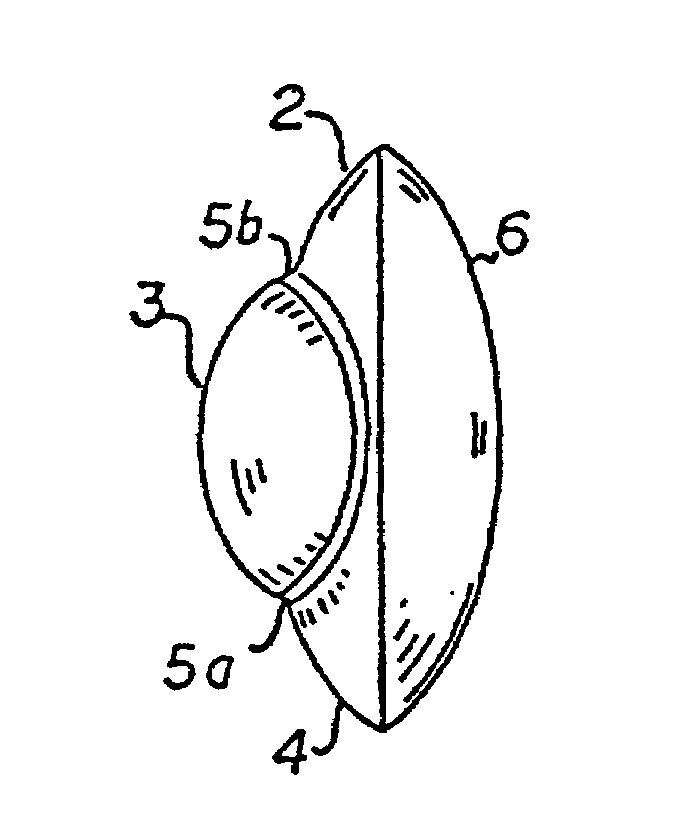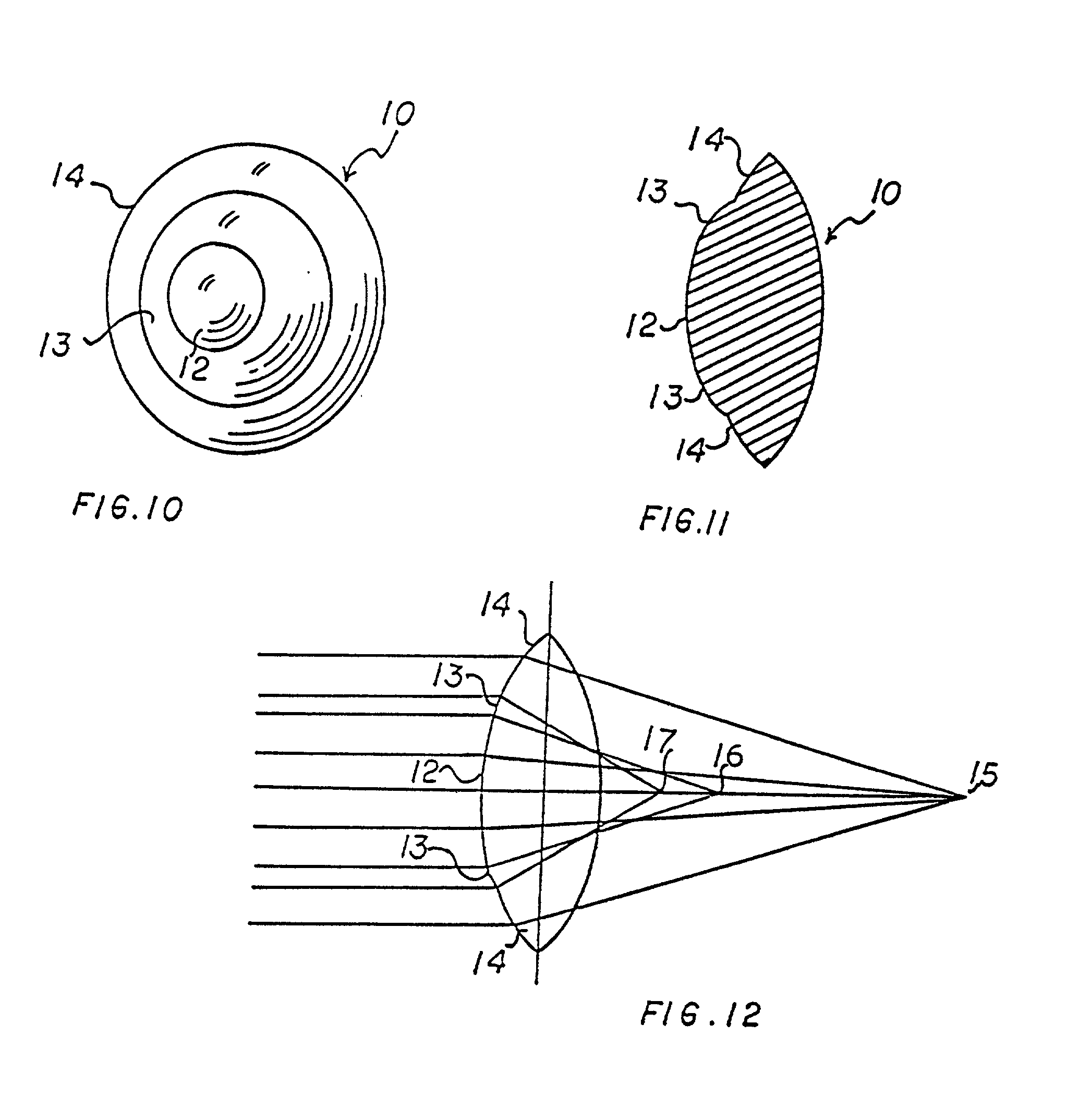Aspheric soft lens
a silicone lens and apheric lens technology, applied in the field of aphakic lenses, can solve the problems of incompatibility of procedures, many pitfalls in estimating the basic refraction, and lack of continuum in the dioptric range, so as to achieve optimal postoperative vision, facilitate and safely implant the effect of the patient's eye, and convenient manufacturing
- Summary
- Abstract
- Description
- Claims
- Application Information
AI Technical Summary
Benefits of technology
Problems solved by technology
Method used
Image
Examples
first embodiment
[0065]Now turning to FIG. 2, there is illustrated the present invention in a side view. The proximal side 6 is a convex surface in this embodiment. As illustrated in FIG. 1, the distal side 1 shows the three sectors hereabove described, namely the upper spherical sector 2, the central aspherical sector 3 and the lower spherical quarter 4.
[0066]In FIGS. 3 and 4, there are illustrated two other embodiments of the present invention. In FIG. 3, the proximal side 7 is a plane, whereas in FIG. 4, the proximal side 8 is a concave surface. In each of the aforementioned embodiments, the distal side has the same configuration.
[0067]FIG. 5 is an explanatory optical diagram illustrating the multifocal property of the first preferred embodiment of the present invention as described hereabove. It should be noted, however, that the optical diagram of FIG. 5 holds true for the other embodiments of the present invention. A ray of light A impinging upon the lens on its spherical sector 2 is focused i...
fourth embodiment
[0068]Now turning to FIG. 6, there is represented a side view of the present invention wherein the aspherical sector 3 extends approximately from the lower quarter 4 to the upper quarter 2. This aspherical sector 3 therefore defines two discontinuities 5a and 5b which can be both blocked out to eliminate glare as stated hereinbefore.
fifth embodiment
[0069]In the fifth embodiment illustrated in FIGS. 7 and 8, the aspherical sector 3 extends over the entirety of the central part of the intraocular lens as in FIG. 6 with the exception of an angular sector 9 in the upper part of the lens. More generally, the aspherical sector 9 can take various shapes. The number of degrees of the aspherical sector in the plane of the lenticulas can vary from 180 degrees to 360 degrees as in FIG. 6 and can take any intermediary value, as illustrated in FIG. 7. A value inferior to 180 degrees is not excluded but may impair the near vision properties of the intraocular lens.
PUM
| Property | Measurement | Unit |
|---|---|---|
| length | aaaaa | aaaaa |
| angle | aaaaa | aaaaa |
| angle | aaaaa | aaaaa |
Abstract
Description
Claims
Application Information
 Login to View More
Login to View More - R&D
- Intellectual Property
- Life Sciences
- Materials
- Tech Scout
- Unparalleled Data Quality
- Higher Quality Content
- 60% Fewer Hallucinations
Browse by: Latest US Patents, China's latest patents, Technical Efficacy Thesaurus, Application Domain, Technology Topic, Popular Technical Reports.
© 2025 PatSnap. All rights reserved.Legal|Privacy policy|Modern Slavery Act Transparency Statement|Sitemap|About US| Contact US: help@patsnap.com



